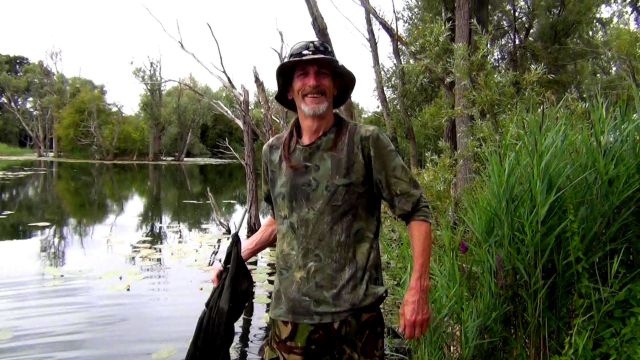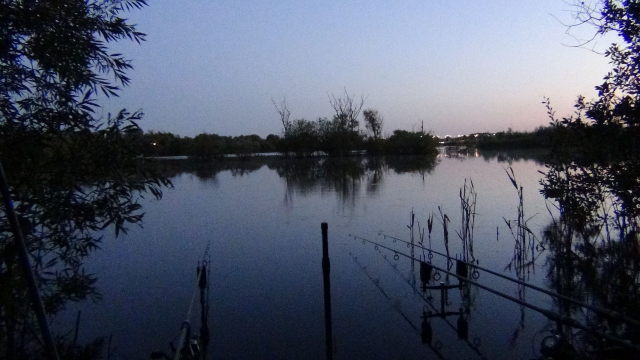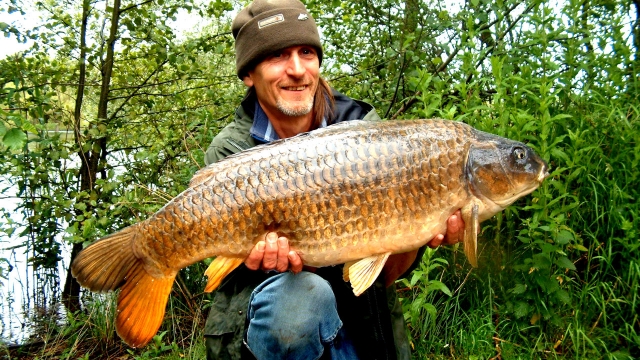
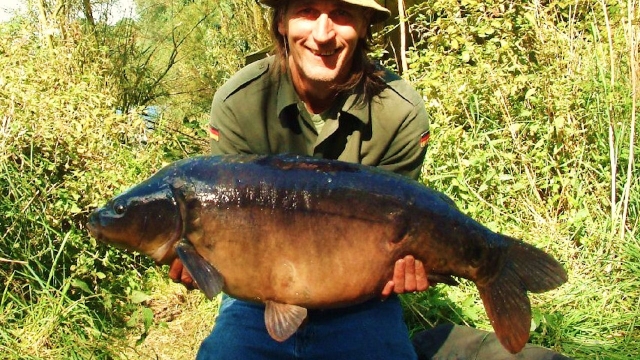
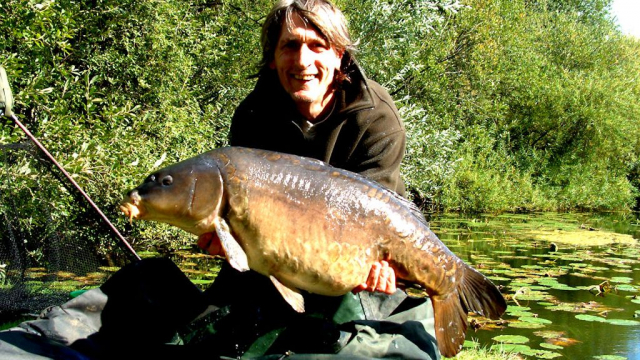
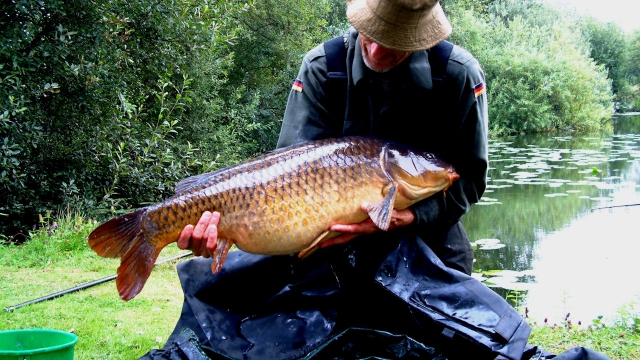
Recently I celebrated my fifty-sixth birthday, to some that's very old, to others not so, but the one thing that number tells me is that I have now been fishing man and boy for fifty years. Time perhaps to look back over those years and reminisce about years gone by, a reality checkpoint if you will. 2013 has been a very different year for me fishing wise, not just because I have caught far less fish than previous years, but also because of the place I have fished and the affect it has had on me. Going through my diary's I am amazed at how many I managed to get onto the bank in the years previous. Back in 2006 I was still fishing the Woolpacks Lake #3 and I had managed 6 fish that season up to 28lb including a new best weight common of 25.8lb. At the same time I fished another water and landed 45 carp from the lake which included twenty 20lb+ fish to 28.8lb.
In 2007 I continued to fish both lakes taking twenty-five of the Woolpack Lake #3's residents, some at their best weight, with an amazing sixteen twenties and my first thirty mirror. I was also doing well on the other lake too taking seventeen fish, twelve of which were over the magic 20lb mark.
In 2008 I continued to fish the Woolpacks Lake #3 but less so taking nine fish, all of them over 20lb and a new best weight common of 30.12lb. As a side-line I also fished lake #2 and added a further ten fish including three more twenties. I also managed to find the time to fish two local waters taking some amazing fish from one of them that absolutely stunned me. Original stock from the seventies, pristine and hardly caught mid-twenty commons, I had seven of those! Plus three very old mirrors, one a mid-twenty fully scaled that is still my personal best fish and was forty years old when I caught it. I managed to get out into the fens too and fish two other waters bringing my total for the year to forty-six fish, including 28 over 20lb topped by my amazing 30lb common.
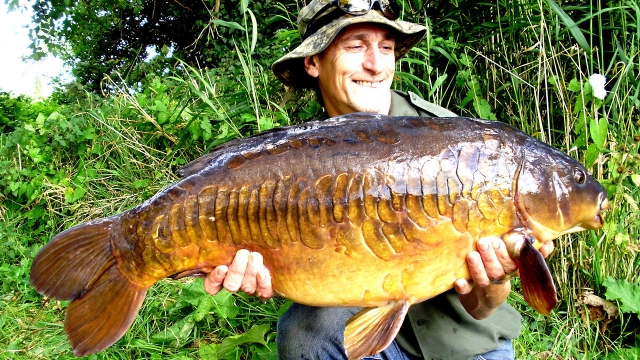
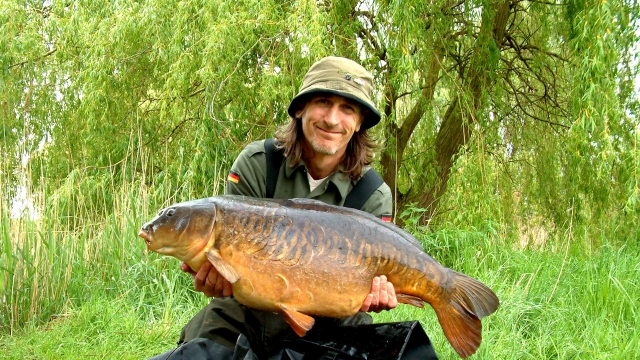
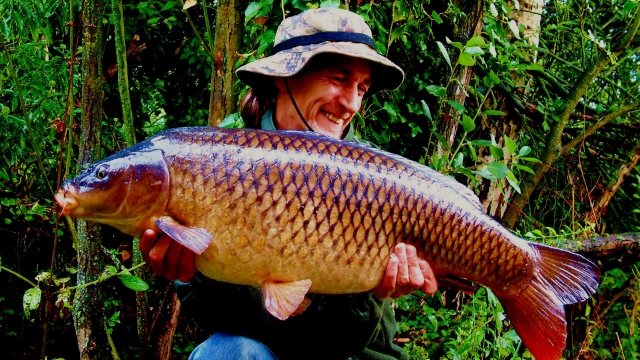
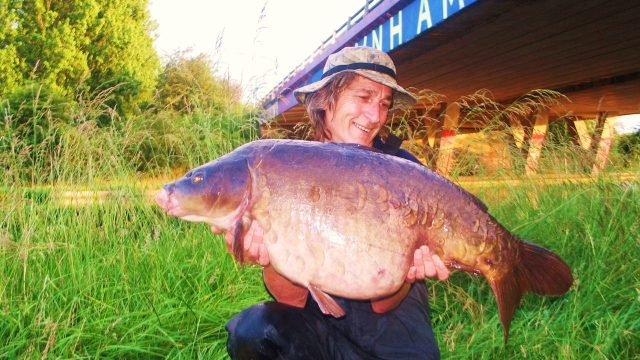
2009 saw me fishing five different waters. Earlier in the year I fished Willow Lake in Earith taking twenty-eight fish including eleven over twenty and a new best weight mirror of 36.2lb. Swavesey Lake where I caught two the first morning, including a 32.8lb beast of a mirror. Pingles pool where I did amazingly well taking twenty-two fish, fourteen of which were 20lb plus and another stunning 30lb+ common.
In 2010 everything went pear shaped as I attempted to fish lake #7 at the woolpack and spent far too much time slogging away at a swim that eventually only produced two fish. Thankfully I had some runs waters to go to and these kept my results respectable.
In 2011 I decided I needed a change, for thirty years I had been tramping around the pits and pools of Cambridgeshire and I craved for a new challenge with the chance of a good fish so I went on to my local river Cam and of course did amazingly well having Bullseye at 34.8lb on my first short morning session and then catching all the fish I had spotted in the following months.
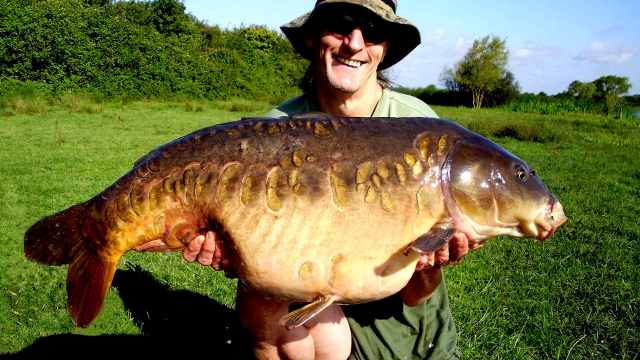
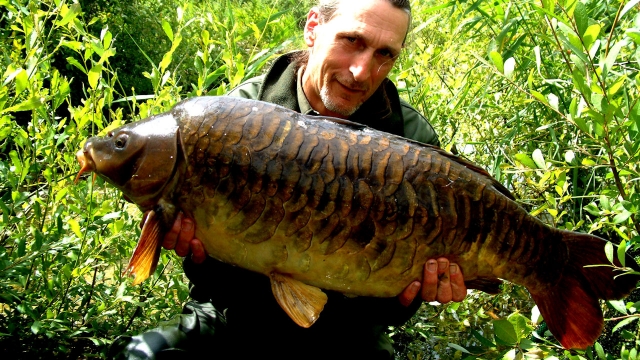
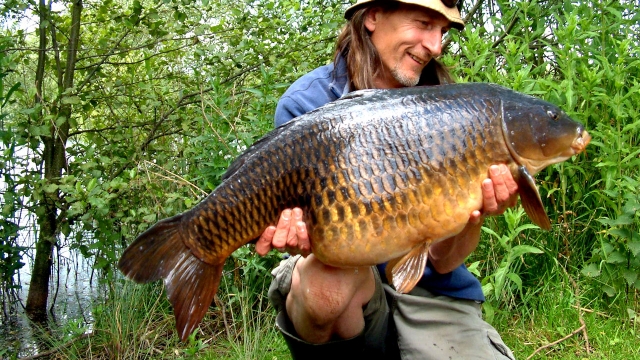
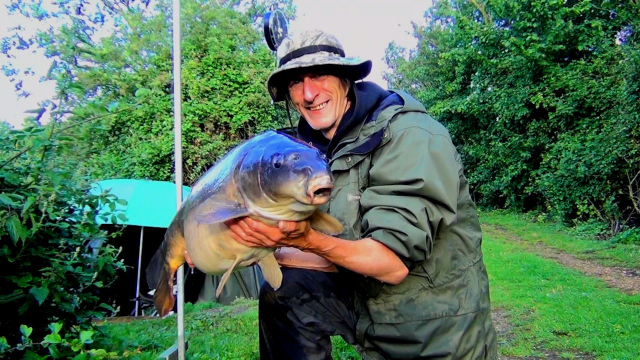
By 2012 I was feeling that I was running out of steam and that something completely new was needed to reinvigorate my fishing.
When I first thought about fishing St Ives it was Big Fjords that inspired me the most. This goes back to when I first fished the complex in the early eighties. Back then I concentrated my efforts on Little Fjords with forays onto the Lagoon and Reach Lake, I kept my eye on Big Fjords whilst fishing the other lakes but the place remained a mystery to me. So it's hardly surprising that I spent much of my time on there when I came back, it was unfinished business after all. I thought long and hard about it too, because I knew catching fish was going to be difficult. Not difficult like it is on busy waters that see a constant stream of carper's rigs and bait. Difficult because of the few fish and the sheer size of the water you had to cover and of course the fact that they can disappear into Meadow lake at will. This is ok, because you avoid that reality with your initial confidence and enthusiasm. You don't know what you don't know, but that enthusiasm as always is overtaken by reality. The unique circumstances we often find ourselves in dictate a change we do not foresee. Fishing Big Fjords is unique and I think that is why I continued to fish it as much as I did. In spite of all the evidence in front of me that I was almost certainly not going to catch much, I carried on. It is often said that the journey is far more important than the destination. Sitting there in the dark looking out over Big Fjords at 3am, awake and alert to every magical moment it conjured up confirmed this in every way.
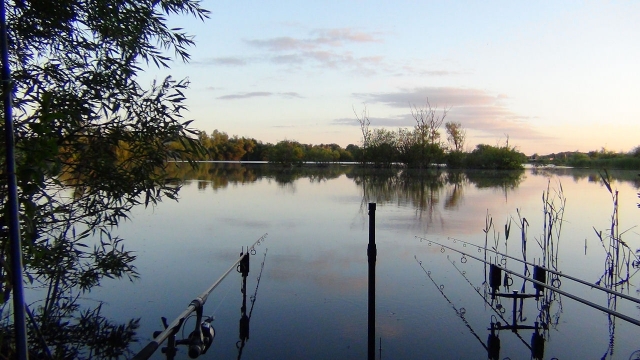
The north bank of Big Fjords has a few good swims and I had spent some time in them searching for fish and looking for signs whilst wandering around. I put in an awful lot of bait on spots, in crooks and cranny's, in the margins, under bushes. It always disappeared, but I suspect the wildlife got far more than the carp ever did. After a while though I became draw to a swim that I nicknamed 'The Dead End swim', so named because the trail along the north bank comes to an abrupt halt due to an impenetrable mass of brambles and undergrowth. You needed to walk back out, further up around reach bank and back on over the bridge to get back to the trail again. So this isolated the swim nicely. The swim itself was small and underwater when I first started to angle it, so rods had to be out in the water and waders had to be on. This made it difficult to fish but not impossible and it was this effort as much as anything else that absorbed me so much.
The dead-end-swim had two bars out in front of it and wonderful margins that stretched out along the whole bank in both directions. During my two four day stays the previous weeks on the spit I had spotted the carp along this bank a few times and in numbers. Anywhere the carp get in numbers is a good place to start and if it has great features like these ones, then it's just asking to be fished. The first bar was at 30 meters and was a continuation of Mozzy Island to the left. The bar made its way parallel to the bank slowly sinking down to about three feet just past the dead trees rising out of the water that marked it so starkly. The bar then eroded down to just a hump a foot or so off the bottom out in front of me before continuing and rising back up again further down to the right. The second bar was basically the same only in reverse having its back out of the water to the right and sinking down where the first bar came up to the left. I decided to concentrate all my efforts on the first bar placing baits in the shallower clean areas as well as further along it in the deeper, weedier parts. When I first started to angle it the weed was quite evident but after a few weeks it became clearer and this was obviously due to the carp rooting around it looking for my bait, as well of course, as the wildlife.
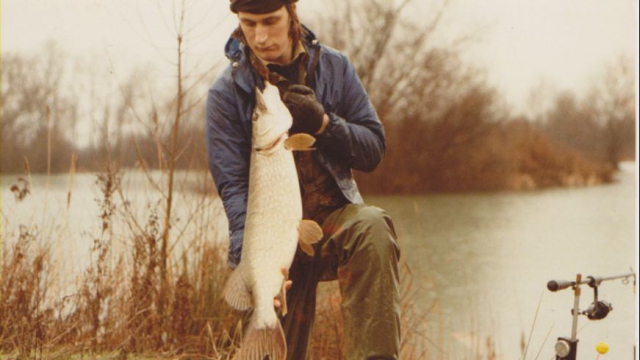
I can't think of a better way to fish any lake than finding a stunning feature like this in an area that carp obviously spend plenty of time in. However, it was still somewhat of a gamble simply because of the amount of water and as I say the very few fish. Busier waters might see fish in a swim like this every day, but here on St Ives they migrate around and correspondingly will be away from the area for long periods. So it's hit and miss, even if you are sitting it out in a perfect swim. I have to say that I had been fighting with myself ever since I walked onto the complex about the best way to tackle the place. My instincts as well as long experience had taught me that moving around as much as I could and being mobile would most likely produce results but more importantly give me a very quick route to finding the fish and getting to know the complex. But time constraints often made this effort seem impossible and so I settled into the routine of arriving and staying for three days with all the associated kit required and it's that fact that I think held me back. Hindsight is a wonderful thing and so is youth, being 56 I no longer have the strength or the energy and sometimes I'll admit the drive to make herculean feats when moving swims. Big fjords is a place that needed it because as I said last month the distances and terrain you need to cover to move from one swim to the next, can make it very difficult.
I spent a lot of time away from the rods when I was bivvied up walking the banks and looking for fish but I never spotted very many and the dead-end-swim seemed to be as busy as anywhere if not more so. The only exception to this was the Stake pit and there is a good reason why I did not fish it. The Stake pit also has a gap where the fish can migrate through into Big Fjords and on this gap there is a swim. This swim was occupied most weeks by another angler I had got to know back in 2010 whilst fishing the Woolpacks Lake #7. I have a lot of time and respect for this guy and since he was concentrating on what is a relatively small part of water (The Stake pit) I felt that it was best to leave him too it, just like I was being left to it on Big fjords. So I never fished it and still feel that was the right decision, even though I knew they got in there. Call me daft if you like but being comfortable in my own skin and respectful of others is something that's vital to my fishing and has shaped the angler I am now.
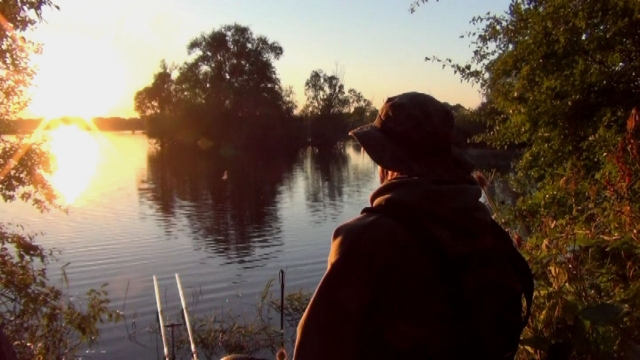
So, given the doubts in the back of my mind about sitting it out in one swim I carried on and made the dead-end-swim base camp for pretty much the duration of my time on Big Fjords. The plan was simple enough, trickle the bait in while I was there and pop in a load more at the end of the session to keep it going until I could get back four days later. I worked four days a week sun-wed so I had thur-sat every week to fish. Nothing got done at home; not even the washing up as every moment I had, was either spent at work, or on the bank. I kept this up for a good few months, going down, fishing, baiting up, going home, working and then coming back four days later.
To a certain degree I was confident that I would get results but like I say I also knew there would be periods when I would be just going through the motions. It's easy with hindsight of course to say 'change tactics' but we have all been there and know the value sometimes of just sticking to it and soldiering on. In any case I simply did not have the time to move around this vast complex trying to find a swim each week. I had found one, a good one and that would have to be it for a while, in the end this single minded approach settled me and I got into a rhythm with the swim and got to know it really well. Confidence for me is about knowing you're doing it right, that you're fishing to your best, when the whole thing becomes effortless. Now you might say that of course results are important and yes they are but let's face it, the line between a pickup converting and not are fine sometimes and something you might not have much control over but you can still count it in. The problems associated with trying to follow fish around the complex given time constraints or any number of other reasons will always be there. Giving yourself credit for getting that run and not a hard time because you lost a fish or that pickup didn't convert is really important and so taking the positive out of the situation rather than the negative in turn raises your confidence. From there you try to improve and it's a better place to start from than the misery we sometimes pile on ourselves.
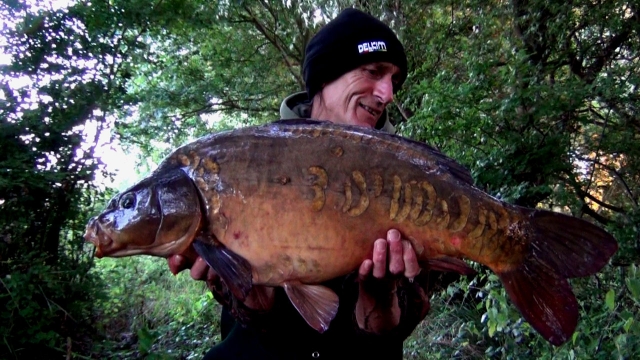
It was with this frame of mind that I set out to fish the dead-end-swim each time I visited. As always at the start of each session I would walk around looking for signs but the plan was always to fish that swim if I did not find a better option and I never really did. All in all it is a great swim with a wonderful view of the Fjords over to Meadow Lake and was always such a pleasure to fish. Each week I was greeted with different conditions and chances and I tuned my response with more thought going into casting, leading around, getting the feel, baiting up, and setting of the rigs. I am positive that it made me a better angler in many ways.
So here we are with hindsight having done a 'stint' and gone up against a tough one. I had three fish out of Big Fjords and I set my sights on four so I am happy with that. I had foray's onto Reach lake and Shallow lake and enjoyed my time on their immensely. Perhaps if I had concentrated on Shallow Lake I would have had more fish as it has a much higher stock per acre than any of the other lakes on the complex. I did try as well but the swims that gave up the fish most often were always occupied and I knew that this would cut down my chances tremendously. I felt that if I could not get into one of the three or four decent swims on Shallow then I might as well be fishing Big Fjords. I did however get into the 'Copse swim' on one session and managed a fish known as 'The Tench'. At 28lb plus it was the largest fish of the year and made me feel a lot better and that I could still catch.
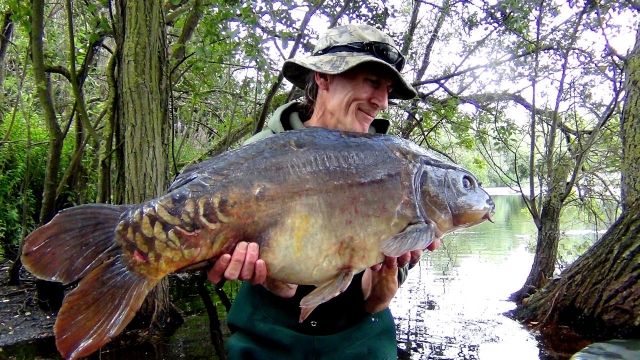
I should have visited a few runs waters to help me through but only did that the once. St Ives absorbed me far too much for anything else to pull me away. Being there every week and going through the motions became an addiction, a necessary part of my life like blood in the veins. I can now fully understand why anglers go to places like St Ives, how they become the anglers they are.
It really isn't like any other fishing; it's a different mind-set, its true carping.

